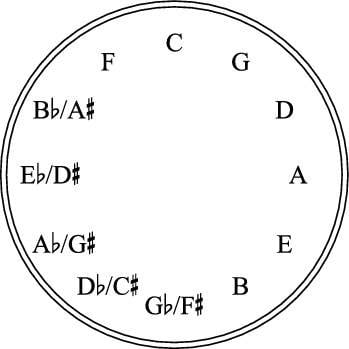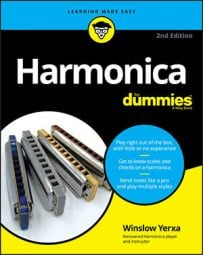Positions on a harmonica are numbered 1 through 12. Each time you count up five scale steps from the key of the harp, you’ve reached the next position. The blow chord (C on a C-harmonica) is designed to be the harp’s home chord. When players use the blow chord as home base, they call it straight harp, or first position.
The draw chord in Holes 1, 2, 3, and 4 (G on a C-harmonica) also makes a great home base for playing. Players discovered this position early on and called it cross harp, or second position.
The G draw chord happens to be five scale steps up from the C blow chord. And five steps up from the G chord is a D minor chord (the draw chord in Holes 4, 5, and 6), and that’s a great launchpad for playing. This is third position (it never had a nickname that really stuck).
Eventually, players agreed that simply adding a number to a position each time you go up five steps was a consistent way to name positions. However, some early books use different systems.
With 12 keys of music, 12 keys of harmonica, and 12 possible positions, you may wonder how you can keep all the relationships from getting tangled up. Harmonica players use a simple diagram borrowed from music theory called the circle of fifths. This circle lets you figure out the relationship among key of harp, key of tune, and position.

With the circle of fifths, as long as you know two elements, you can figure out the third. Here’s how:
If you know the key of the tune and the position, and you want to find the key of harmonica to use, follow these steps:
Start with the key of the tune and call that “1.”
Move counterclockwise until you reach the position number, and then use the corresponding key of harp.
For example, say you’re going to play a tune that works in third position, and you know that the tune is in A. What harp should you use? Start with A (the tune’s key), which you can call “1.” Then count to 3 counterclockwise (A-D-G). So to play in the key of A in third position, you need to use a G-harmonica.
If you know the key of the harp and the key of the tune, and you want to know what position that is, follow these steps:
Start at either the key of the harp or the key you’re playing in (it doesn’t matter which one).
Count the shortest distance from one to the other. (It doesn’t matter if it’s clockwise or counterclockwise, as long as it’s the shortest way.)
Say, for example, you’re playing a C-harmonica and you figure out that you’re playing in E. What position is that? You can start at C (the key of the harp) and count to E (the key of the tune). Or you can start at E and count to C. As long as you go the shortest distance (either E-A-D-G-C or C-G-D-A-E), you’ll discover that you’re playing in fifth position.
If you know the harp’s key and the position, and you want to know the tune’s key, follow these steps:
Start with the key of the harp and call that “1.”
Count clockwise until you come to the position number; when you hit the position number, you’ve found the key.
For example, imagine that you’re grooving in second position on an A♭-harmonica. You want to know what key you’re grooving in. You start at A♭ (the harp’s key) and call that “1.” The next stop clockwise is second position. So, as you can see, you’re stylin’ in E♭ — crazy, baby!

